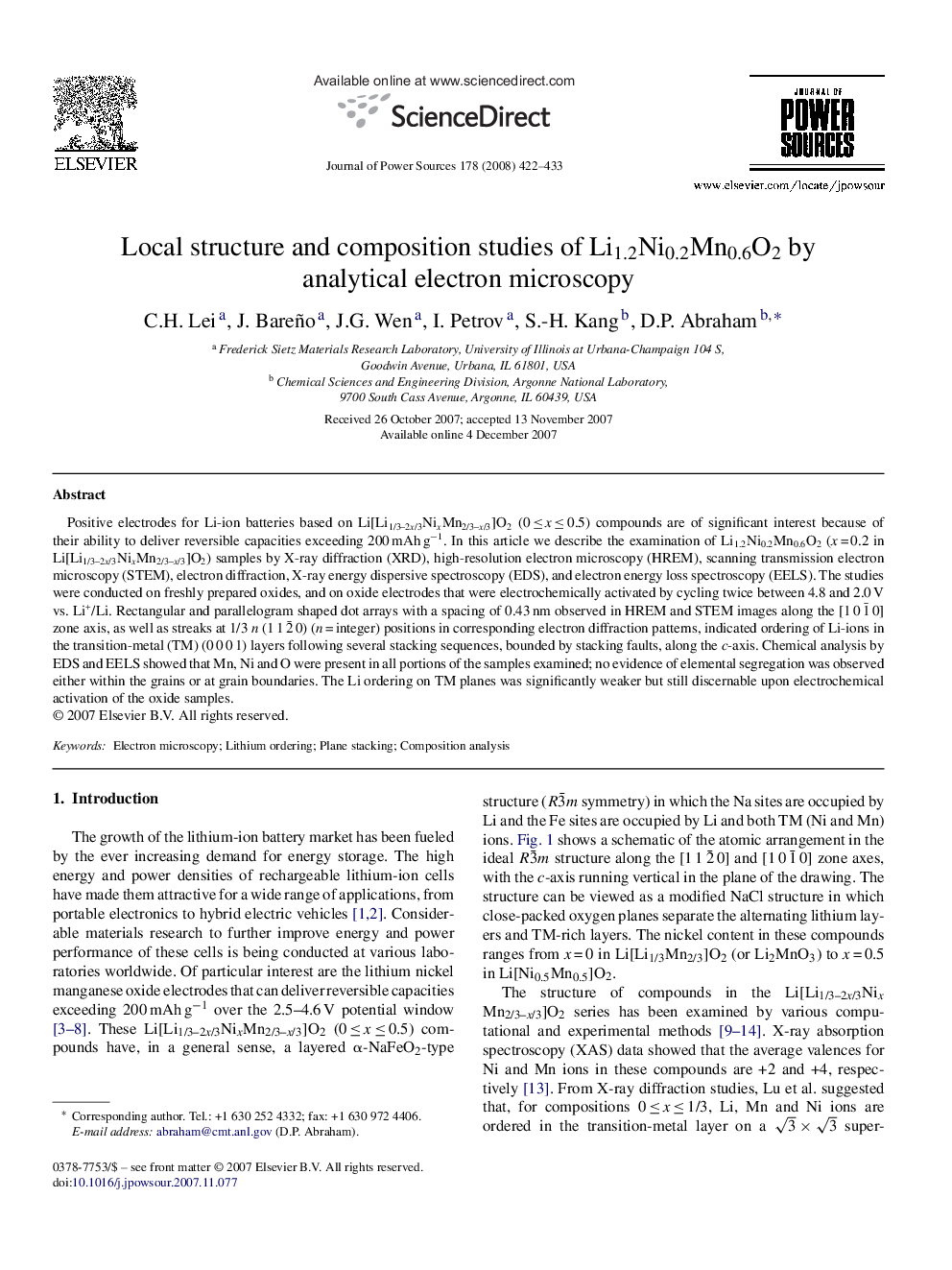| Article ID | Journal | Published Year | Pages | File Type |
|---|---|---|---|---|
| 1291538 | Journal of Power Sources | 2008 | 12 Pages |
Positive electrodes for Li-ion batteries based on Li[Li1/3–2x/3NixMn2/3–x/3]O2 (0 ≤ x ≤ 0.5) compounds are of significant interest because of their ability to deliver reversible capacities exceeding 200 mAh g−1. In this article we describe the examination of Li1.2Ni0.2Mn0.6O2 (x = 0.2 in Li[Li1/3–2x/3NixMn2/3–x/3]O2) samples by X-ray diffraction (XRD), high-resolution electron microscopy (HREM), scanning transmission electron microscopy (STEM), electron diffraction, X-ray energy dispersive spectroscopy (EDS), and electron energy loss spectroscopy (EELS). The studies were conducted on freshly prepared oxides, and on oxide electrodes that were electrochemically activated by cycling twice between 4.8 and 2.0 V vs. Li+/Li. Rectangular and parallelogram shaped dot arrays with a spacing of 0.43 nm observed in HREM and STEM images along the [1 0 1¯ 0] zone axis, as well as streaks at 1/3 n (1 1 2¯ 0) (n = integer) positions in corresponding electron diffraction patterns, indicated ordering of Li-ions in the transition-metal (TM) (0 0 0 1) layers following several stacking sequences, bounded by stacking faults, along the c-axis. Chemical analysis by EDS and EELS showed that Mn, Ni and O were present in all portions of the samples examined; no evidence of elemental segregation was observed either within the grains or at grain boundaries. The Li ordering on TM planes was significantly weaker but still discernable upon electrochemical activation of the oxide samples.
